Jeffersonia diphylla
The Twinleaf has a very short bloom. Â We had been keeping a close eye on it everyday, so we did not miss its bloom.
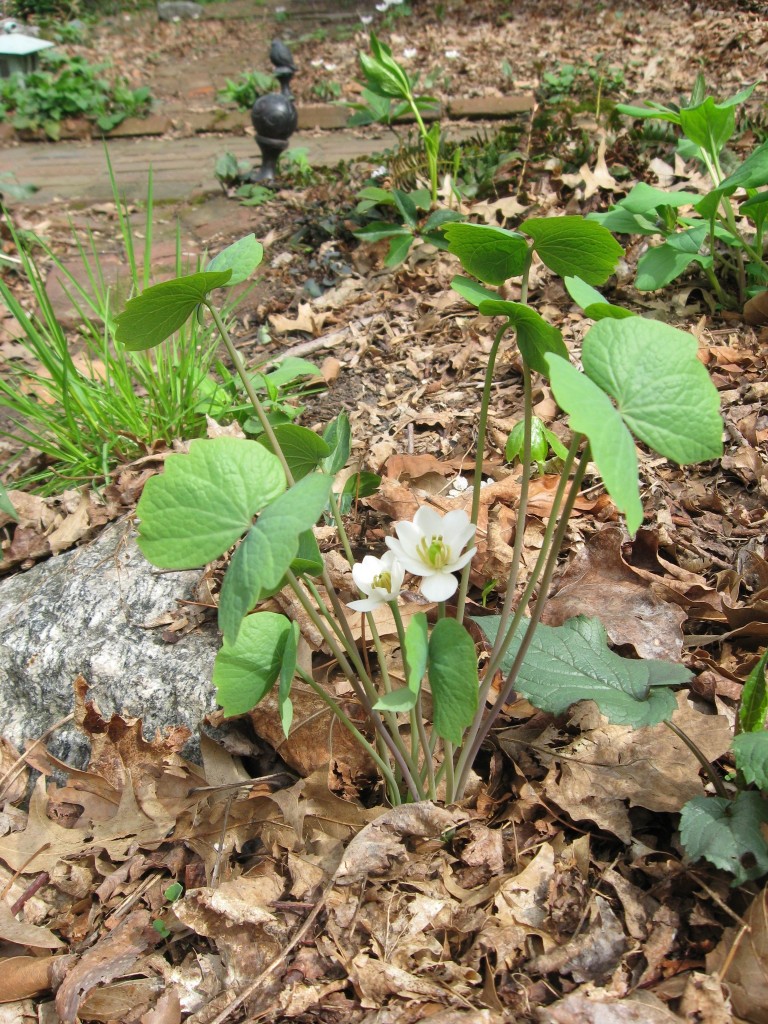
The Twinleaf is similar to the Bloodroot in some respects; the ephemeral flower and the texture of the leaves. Â The leaves have a distinct butterfly appearance and they are on taller stems.
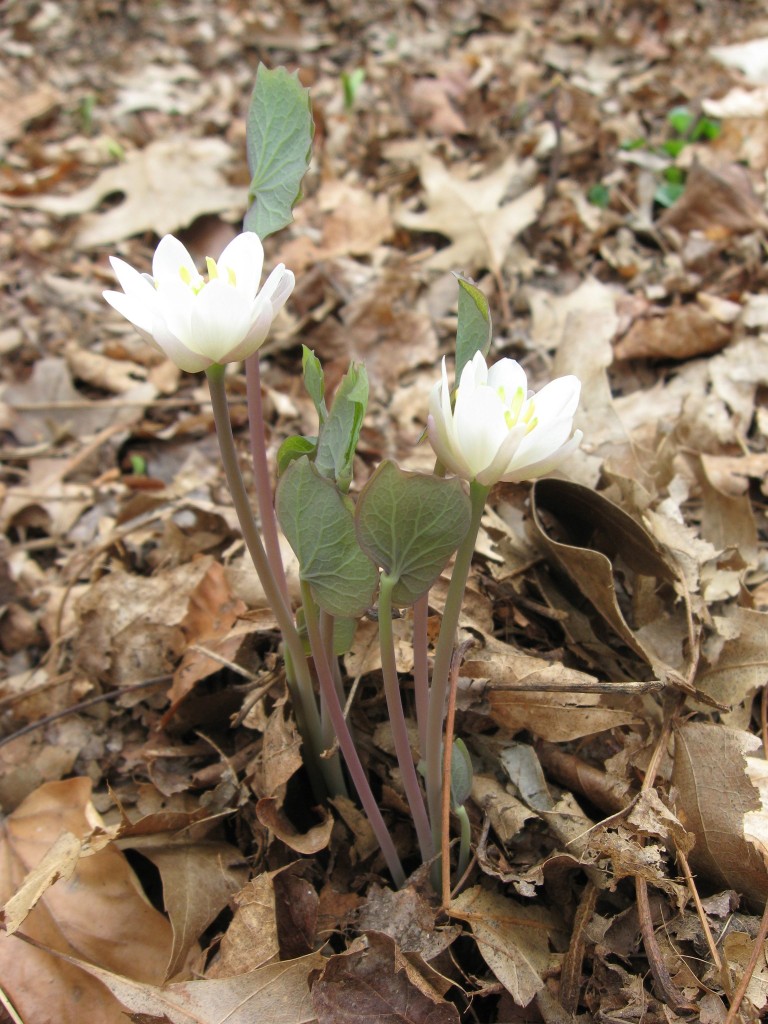
In this picture above, the emerging twinleaf could easily be mistaken for an emerging Bloodroot.
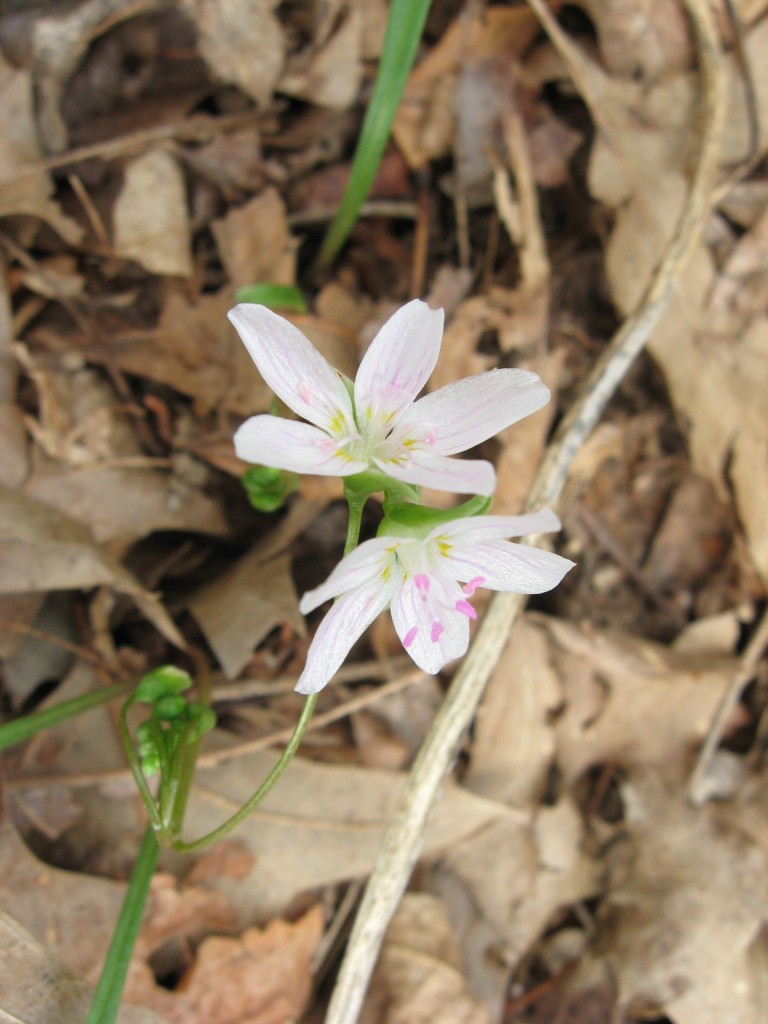
Claytonia Virginica, Above. Â The Spring Beauty, another great garden specimen. The ephemeral flower lasts one day, but curled up below are the flowers for tomorrow and the day after.
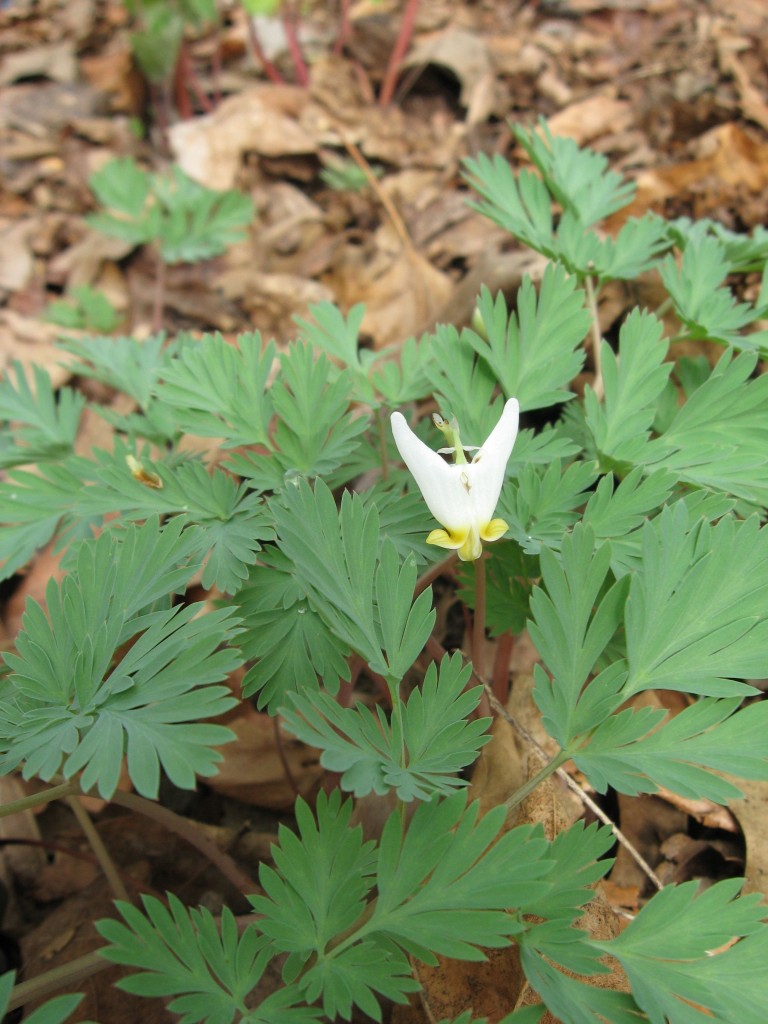
Above, Dicentra cucullaria, the Dutchman’s Breeches, named for the look of pantaloons hung out to dry. When we purchased this from the nursery three years ago we were told it would take a few years to get established and actually flower. Â This is our first and only flower we have ever had!
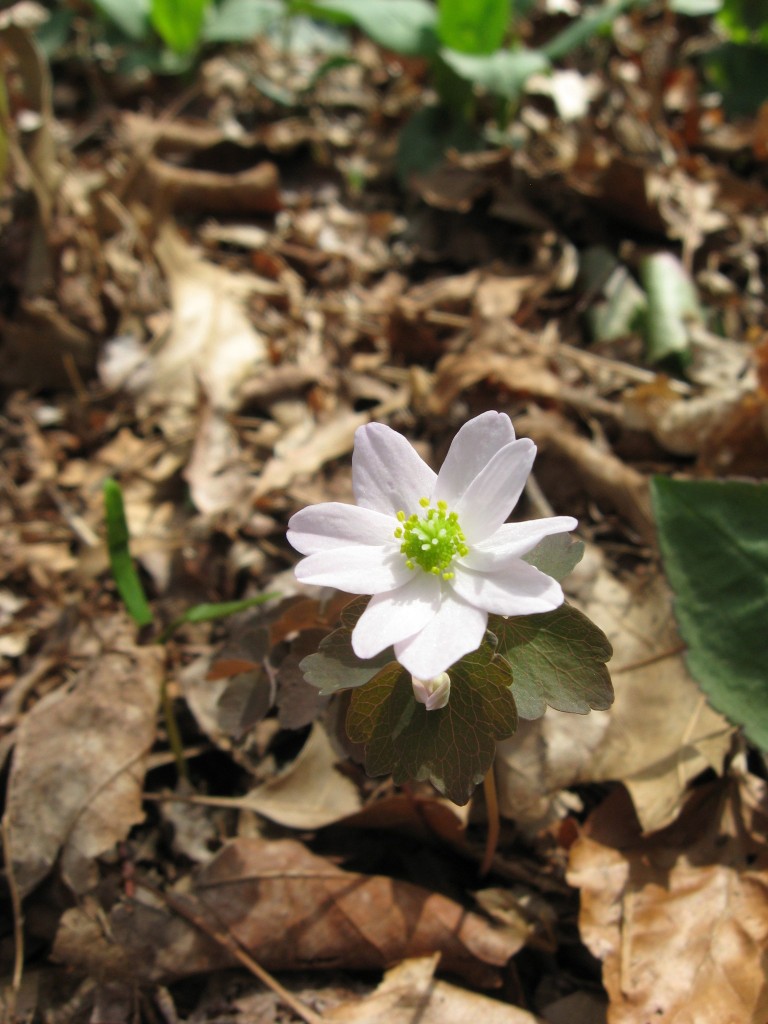
Our first blooming Rue anenome blooms in the above picture.
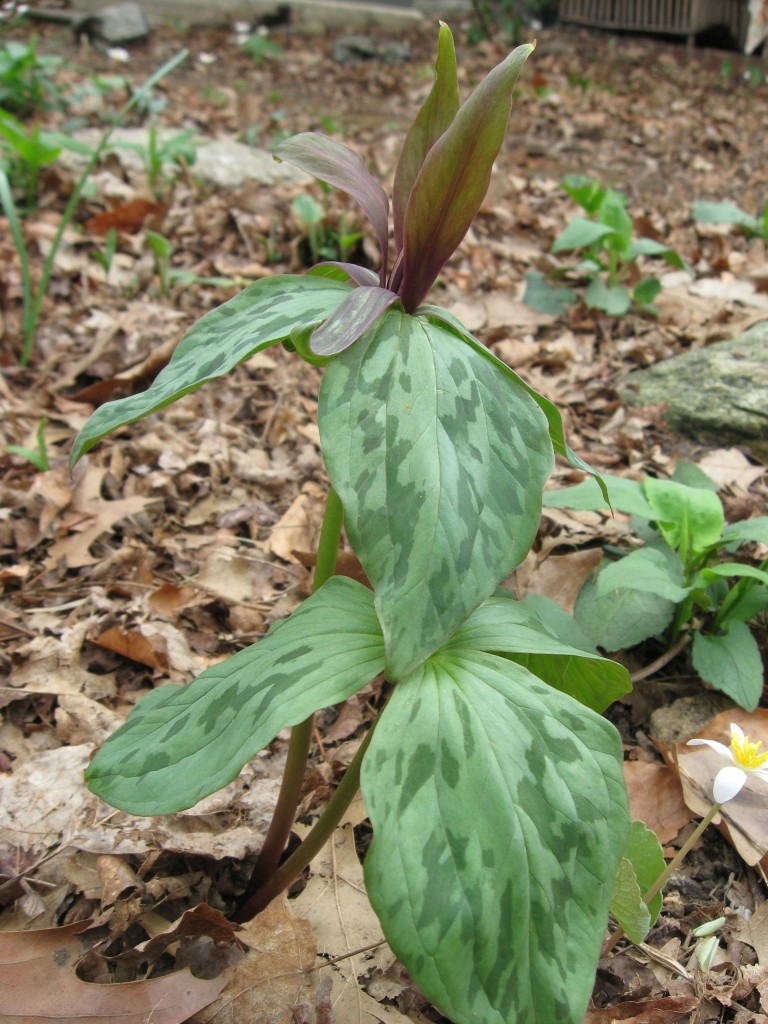
Above, a yet to be identified sessile Trillium. Â What was purchased as a white trillium, turned out to be another variety altogether! This is one risk of buying bare root plants from time to time. Â This one is not native to our region of Pennsylvania, something we aim for in our garden, but we will see how this one does.
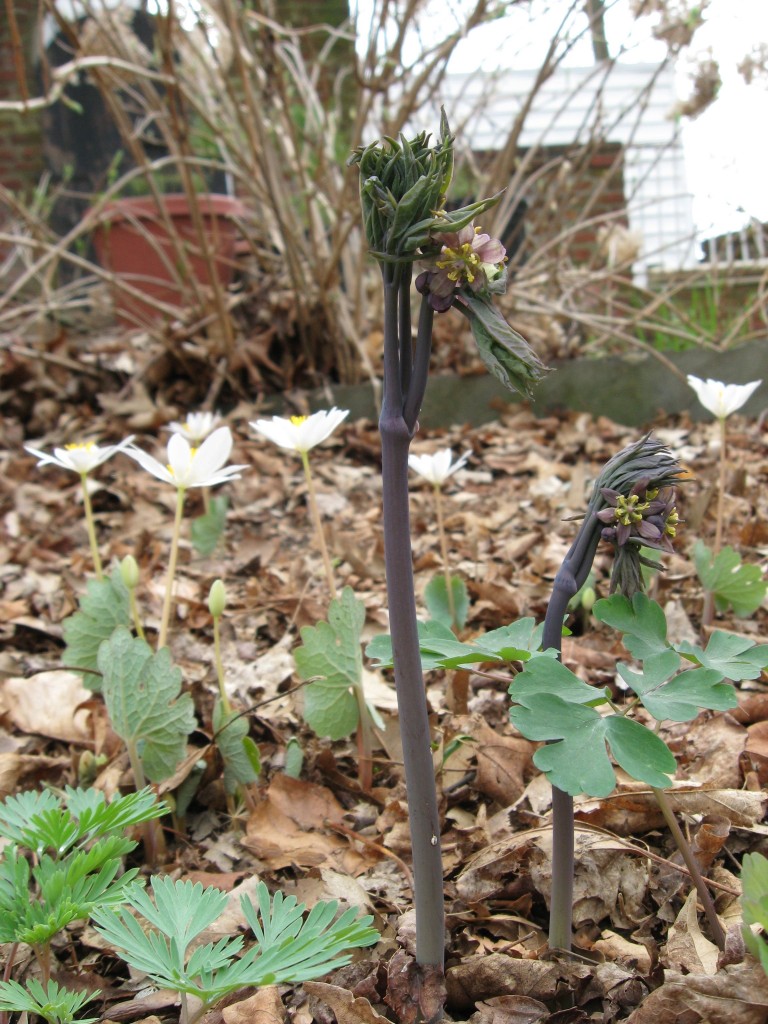
Caulophyllum thalictroides
The Blue Cohosh above has alot of personality when it first emerges from the earth. Â The plant is still curled up, and it is flowering, with a very beautiful, but understated yellow flower.
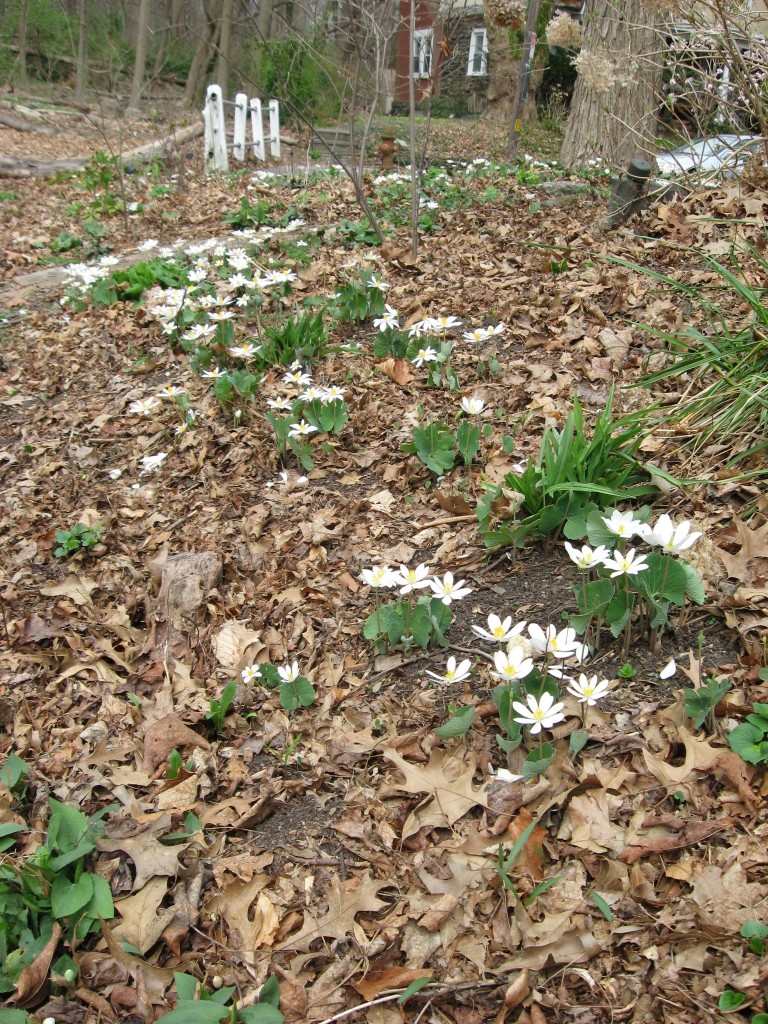
Our Bloodroot plants have been slowly growing into attractive colonies. What began as two bags of root segments purchased in the fall of 2009 is now a yard full of clusters of  beautiful white flowers.  Then the shimmering blue -green leathery leaves will fill out as ground cover.  When we first started out, this whole yard was a monolithic strata of Japanese Pachysandra(Pachysandra terminalis), much of which had escaped into the adjacent Morris Park.  We had a vision of using bloodroot as a groundcover to replace the Pachysandra.
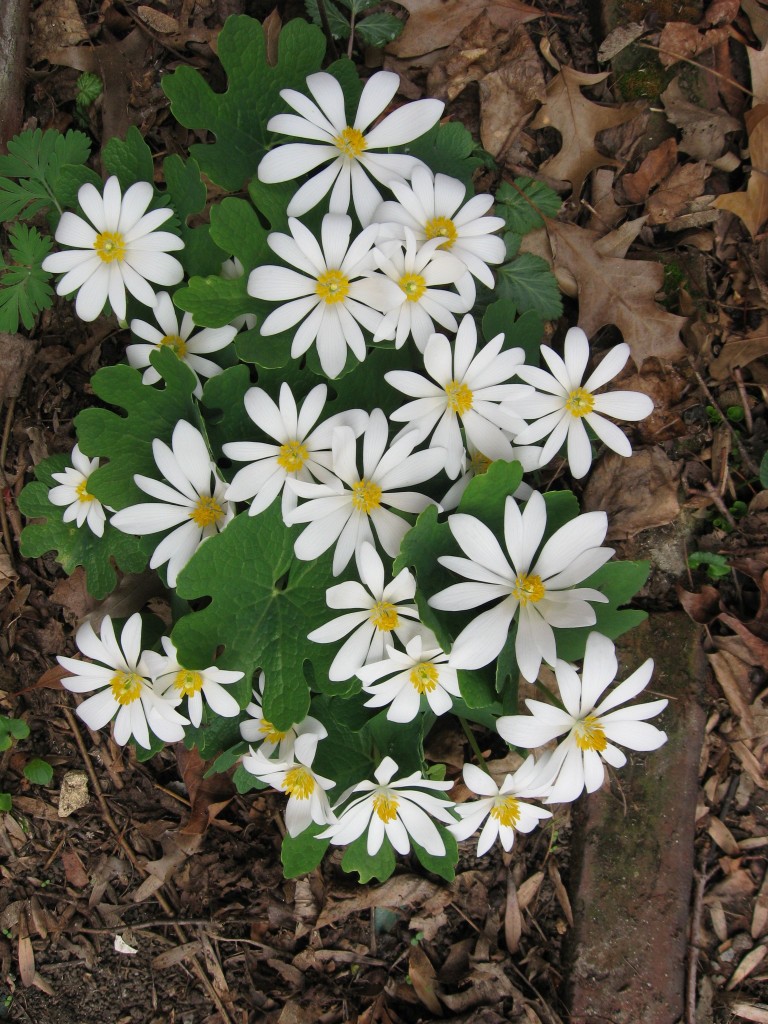
If you have a woodland yard in the Eastern U.S. and are interested in creating a woodland forest floor, many of these plants may be suitable for your site, especially on the piedmont. Â They are available at native plant nurseries and plant sales in your area, and are a pleasure to grow!


